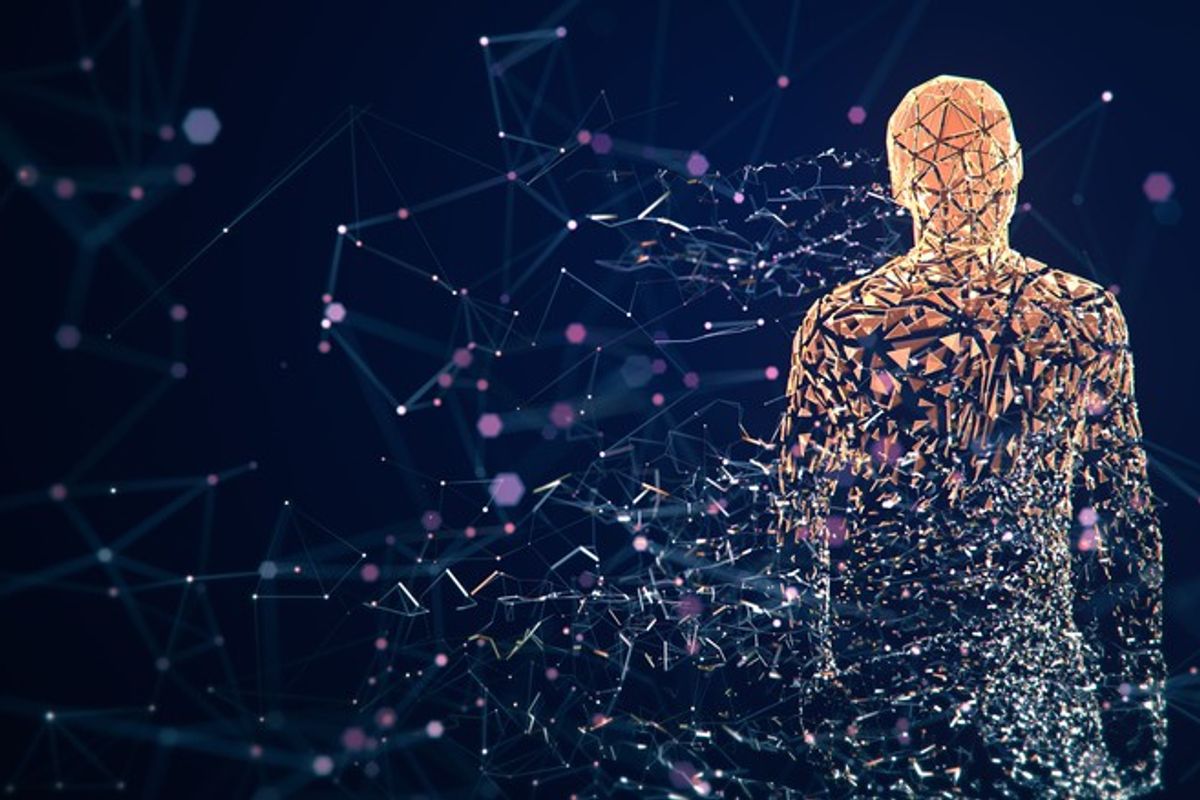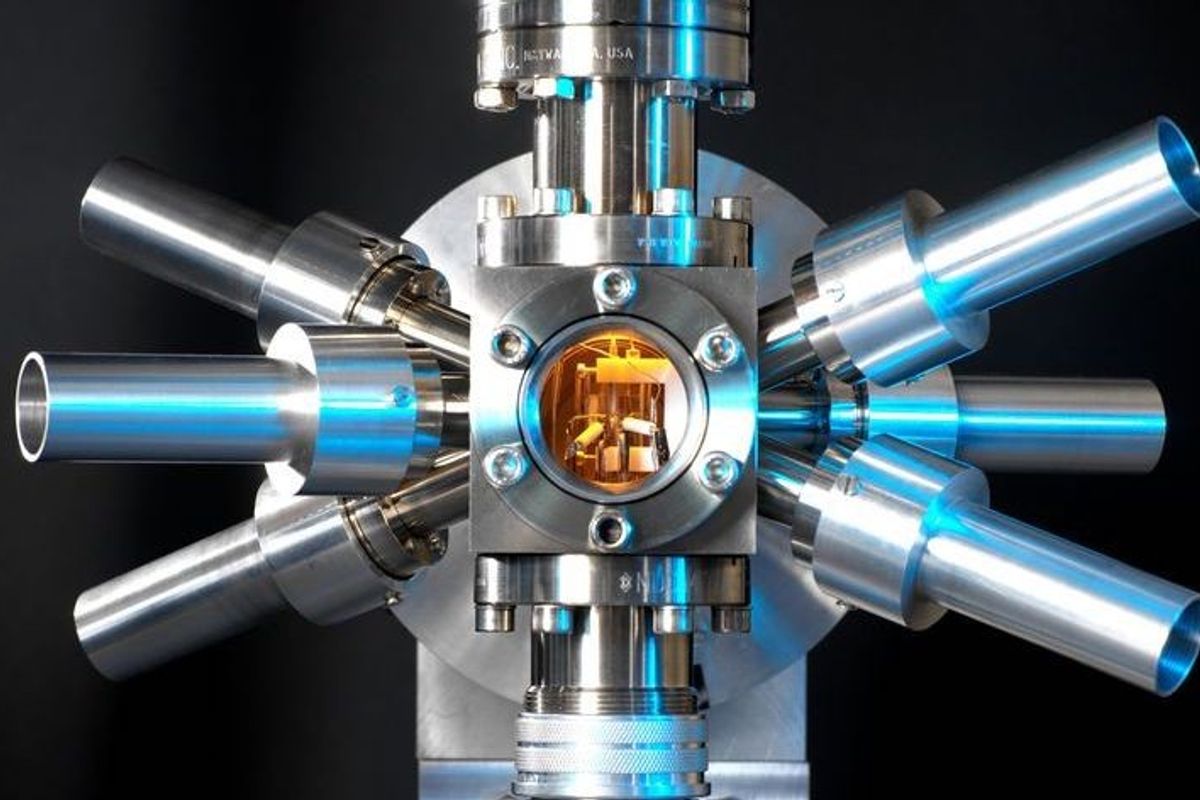Quantum computing and other technologies, which seek to exploit the bizarre behaviors of particles at the microscopic quantum level, have the potential to revolutionize computing, sensor systems, and a wide array of other information systems. As this theoretical field nears practical implementation, The Cipher Brief’s Fritz Lodge asked Dr. Brad Blakestad, Program Manager of the LogIQ program at the Intelligence Advanced Research Projects Activities (IARPA) under the Office of the Director of National Intelligence (ODNI), to explain how these new capabilities could revolutionize or undercut current U.S. national security and military technology.
The Cipher Brief: For the layman, what are quantum physics and how does this field inform the creation of new technologies that we are now seeing emerge?
Brad Blakestad: Quantum physics is an area of physics that really started over 100 years ago, which says that when you get down to a really small scale and a really low energy scale, things just behave in very different and unusual ways.
There is something called superposition, which means that a particle can be in two states at once; there are things like quantum entanglement, which produces “spooky action at a distance” between particles. It was a great surprise when they first started discovering these phenomena, but it wasn’t until more recently that we focused on actually controlling them. This has led to the question of what applications we can use these different properties for in quantum information tasks, such as quantum sensing or quantum computing.
TCB: Can you describe some of the practical applications that things like quantum computing could be used for?
Blakestad: The first thing to look at is this idea of superposition. This is something that fundamentally doesn’t make sense from a classical standpoint, but when you get down to these small energy scales, what you’ll see is that a particle can be in two states at once.
For example, electrons have this property called spin, it’s basically like a little magnet and the spin can be up or the spin can be down from a classical standpoint. But from a quantum mechanical standpoint, you actually have the ability to be in a superposition, which means that the particle is both up and down at the same time.
This is a really interesting capability if you’re thinking about something like computing. In computing you have bits, which are basically like spins, they’re either zero or one. In a classical computer you’re always doing computations on zeroes and ones, but on a quantum computer you could be doing a computation on a superposition of zero and one.
Here’s one way to see how this is useful: If you have three classical bits of zeros and ones, they can represent any number from zero up to eight, so there are eight possibilities. And if you wanted to do a calculation, say add the number one to a classical bit and do that same computation for the rest of the combination, then you would have to repeat that process eight times. However, if you have a superposition state, you can have each of the individual bits – which we call quantum bits – acting as both zero and one at the same time, which means you are actually representing all eight possible numbers simultaneously. So then if you want to add one to all of that, you just add one to this superposition and you get all eight answers simultaneously. This is a massively parallel system.
But there are a lot of problems with this. There’s a problem called the measurement problem, which is that superpositions don’t stick around once you measure them. So when you measure the quantum bit, you don’t get all eight answers, it just collapses into one answer and, even worse than that, you can’t choose which answer it collapses into. Thus, you don’t want to ask questions where you need an answer to every single input, you want to ask it questions where there’s really one right answer that comes out. Unfortunately, there aren’t many problems that we’re aware of at this point where that would actually be useful, but this is a big focus of the research right now.
TCB: Can you tell me a bit about the program that you run at IARPA, the Logical Qubits program?
Blakestad: A physical qubit is the actual hardware implementation of this zero or one superposition state, but the problem is that these things are very sensitive to noise, so it’s very easy to make errors.
In order to have a useful computing platform, you’re going to have to somehow deal with these errors. The approach that most people are taking is trying to develop error correction where you basically take the information from one quantum bit and you distribute it across multiple physical quantum bits in a layout that’s basically termed a logical qubit. Because you’ve now distributed that information across multiple physical qubits, you can make measurements on those physical qubits without actually disturbing the information that you are trying to protect. You can extract only the information about errors that have happened on each individual qubit. That allows you to go in and correct errors while avoiding this quantum measurement problem.
This is a very important concept in terms of the viability of quantum computing. And the goal of this program is to see if we can demonstrate this error correction concept. This can teach us whether or not error correction is something that’s going to be viable and what next steps we’ll need to take to do error correction on a larger scale, not just one logical qubit.
TCB: What about quantum sensing, how could that be used?
Blakestad: The quantum ideas of superposition and entanglement can also be used in a sensing application, so one of the things that’s interesting with quantum systems is that they’re very susceptible to noise [interference from the outside environment]. From the computing standpoint, this means that you have to implement some kind of error correction system to make it work, which is actually what I work on at IARPA.
However, this fact that they are susceptible to noise also makes quantum systems very good sensors if the noise is actually the signal that you’re trying to detect. There have been demonstrations already out of the group at NIST where they did an atomic clock experiment at one height and then again a few feet higher, and they were actually able to sense the slowing down of time at the different altitude just because it’s that much further away from the gravitational pull of Earth.
It’s the same thing with the idea of spin that I talked about before. It is basically a little magnet so when you apply a magnetic field, it will also affect the qubit. As a result, you can get highly sensitive measurements of electric fields, gravitational fields, magnetic fields, etc.
TCB: In the context of defense and national security technology, what are the most exciting applications that you or other people are thinking about right now?
Blakestad: Quantum sensing is probably nearer term than quantum computing, but we’re still very early on in those stages. I think that the most immediate application, which is already realized to some extent, is these highly sensitive atomic clocks that are coming out of NIST in particular.
In terms of other applications, we’re still very much in the exploratory phase of figuring how to effectively control these systems, both in the sensing world and in the computing world. It’s not yet clear how good that control will be. But once that control is there, all of these things have clear applications in national security.
TCB: If you look down the road and everything goes as theorized, what is the most interesting aspect of quantum technology to you?
Blakestad: I come from the quantum computing background, and I think that some of the work there is really exciting. I’m kind of a device person so I would say that the ability to control these quantum systems at ultra precise levels has a lot of interesting physics implications. But if you look at those things that are the most exciting, it’s really exploring what a quantum computer would be useful for, what quantum sensors can ultimately do. And the biggest accomplishment will be being able to control these different systems at the level of control we’ll need to accomplish.








